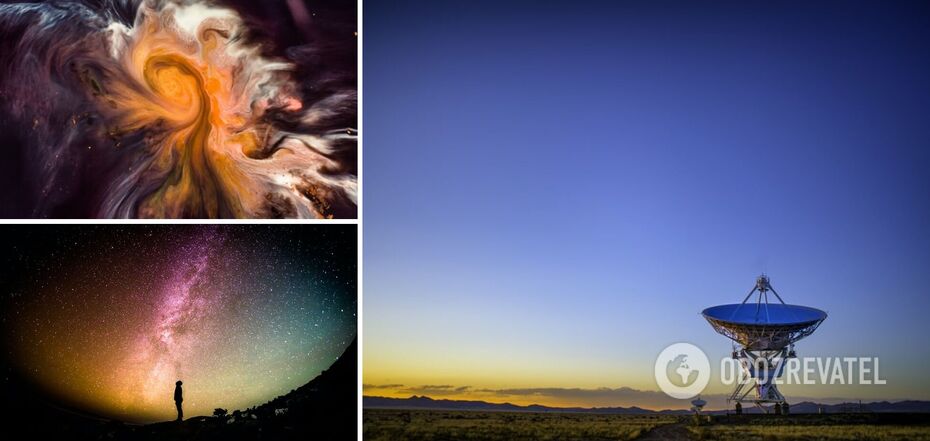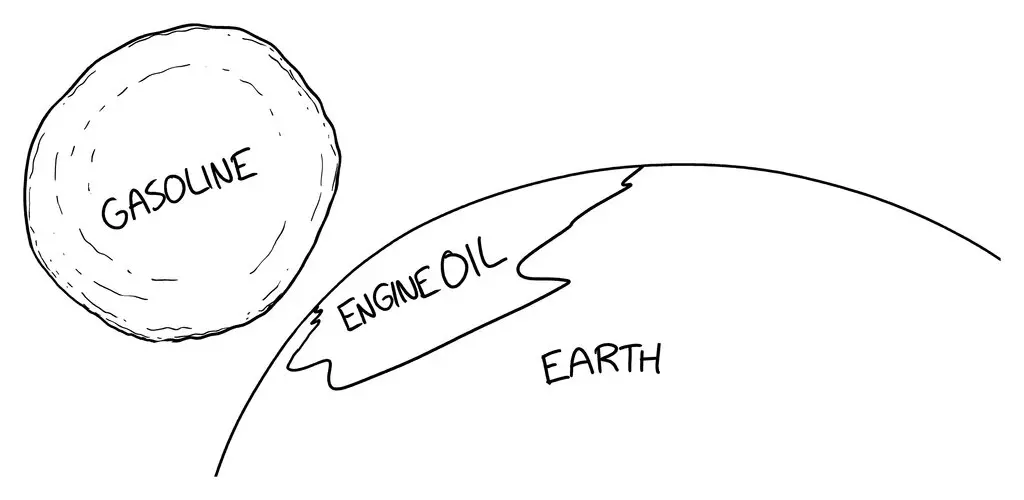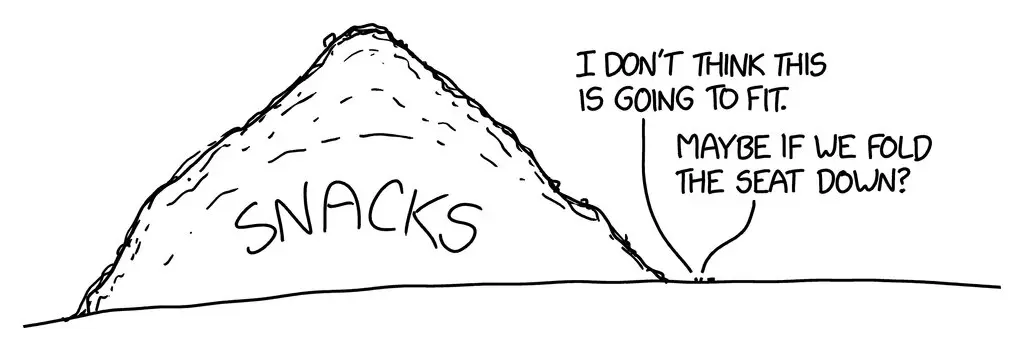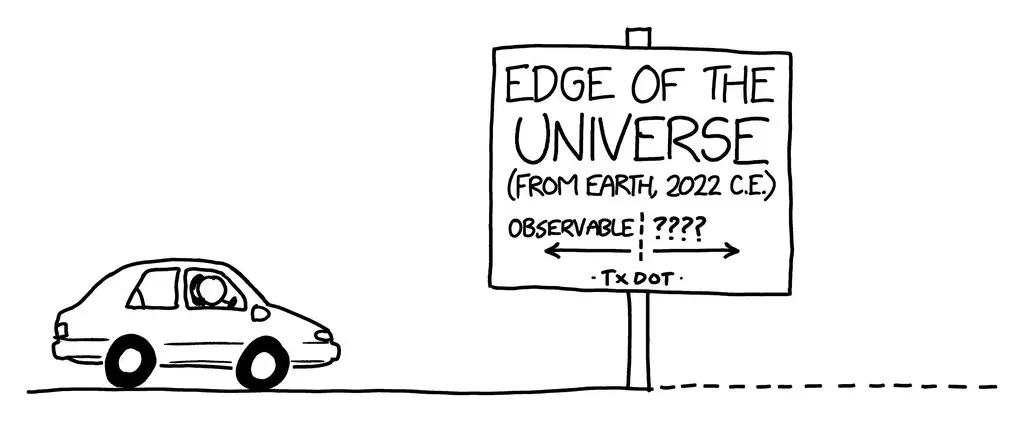Life
How long will it take to travel by car to the edge of the universe: an impressive answer has emerged
Whether you've read Douglas Adams' The Hitchhiker's Guide to the Galaxy or not, the thought of driving to the edge of the universe has probably crossed your mind at least once. But have you ever thought about what such a journey might look like? How many supplies would you need? How often would you get into an accident?
Randall Munroe, a writer for The New York Times, thought about it. And then he took a calculator, did some maths and drew a comic strip about a road trip to the edge of the universe, as he is also the newspaper's in-house cartoonist. Here are his conclusions.
The edge of the observable universe is about 270,000,000,000,000,000,000,000 miles (434,000,000,000,000,000,000,000,000,000 km - if in more conventional numbers with a huge number of zeros) away from us. Let's say you set off at 65 miles per hour (almost 105 km/h). How long will it take you to reach your destination? Simple calculations show that in 480,000,000,000,000,000,000,000,000,000,000,000,000,000,000,000,000,000,000,000,000,000,000,000,000,000,000,000,000,000,000,000,000,000,000,000,000,000,000,000 - that's 4.8 × 10¹⁷ years, or 35 million times the present age of the universe.
Let's say you have that much time, and you go on an unusual holiday, for example. The journey is going to be dangerous. According to statistics, you will get into your first accident before you leave the solar system. In the United States, the average driver has one fatal accident for every 100 million miles (almost 161 million kilometres) driven. So your first major accident will be somewhere around the asteroid belt between Mars and Jupiter. This figure is slightly lower for truckers. But even they are unlikely to reach Jupiter without incident.
Based on the national accident rate for the United States, the probability of a driver travelling 46 billion light-years without a single accident is approximately 1 in 10¹⁰^¹⁵. "This is roughly equal to the probability of a monkey with a typewriter typing the entire Library of Congress without making a mistake 50 times in a row. You'll need a self-driving car, or at least one with one of those alarms that warns you if you're going out of your lane," Munro writes.
Get ready to spend money on fuel, too. With a consumption of just over 7 litres per 100 kilometres, you'll need enough petrol to reach the edge of the universe to fill the moon if it were empty inside. You'll have to stock up on oil the size of the Arctic Ocean, which is just enough for the 30 quintillion oil changes you need.
Do you think that's all the supplies you'll need to take with you on this exciting journey? But no! You will definitely need food. Approximately 10¹⁷ tonnes of snacks. You'll need a big boot for this.
The landscape on the trip will be quite monotonous - pitch black and only distant stars in the depths of space, which are dangerous to approach because of their temperature. However, at a distance of 2800 light-years from Earth, you will be able to look at the star Kepler-1606. Its temperature is roughly equal to room temperature, so it will be possible to see it almost up close. But it will take a long time to get there. At the speed chosen earlier, the journey will take 30 billion years. During this time, the star is likely to swallow the planet that orbits it.
What can you do on the way to Kepler-1606? You can listen to audiobooks and podcasts. But the trouble is, even all the content recorded in these genres combined is unlikely to be enough for you to leave the solar system. You will have to listen to some things many, many times.
"British anthropologist Robin Dunbar famously suggested that the average person maintains about 150 social connections. The total number of people who have ever lived is over 100 billion. A 10¹⁷-year trip would be enough to recreate the lives of each of these people in real time - in a kind of unedited documentary - and then watch each of these documentaries 150 times, each time with a commentary by one of the 150 close friends of that person," Munroe calculated. And even such an exhausting documentary series, let's be honest with ourselves, would not be enough to reach the edge of the universe. There would still be about 1% of the way to go.
And so, let's imagine that you have spent 4.8 × 10¹⁷ years on the road and have reached your goal. It's time to go back. And this is about the same amount of time on the road. But where will you be returning to? During your journey, the Universe will change beyond recognition. Scientists believe that by this time, only black holes and frozen star shells will remain in it.
But there is good news. You will be able to continue your journey. After all, the Universe we observe is the space where the light from the Big Bang has managed to reach. It continues to spread, expanding the visible Universe for us. So, in all likelihood, you will have somewhere to go next. You'll just need to get some new snacks for the road.
As reported by OBOZREVATEL, late last year, scientists created the largest and most realistic model of the Universe. With this model you can move through time and observe the evolution and behavior of individual galaxies and their clusters
































